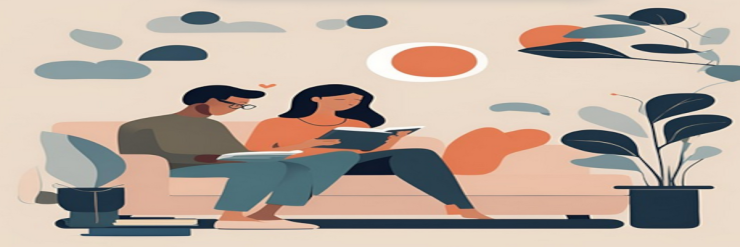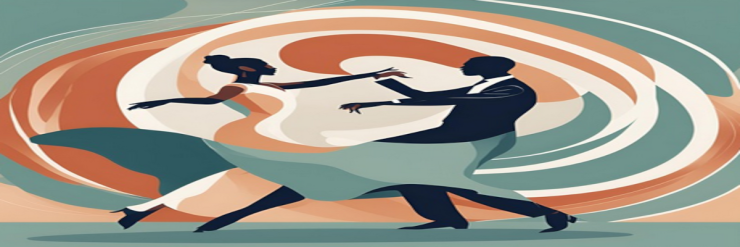Drawing Techniques and Styles: Unlocking Creativity
"Drawing is not just the act of transferring a subject onto paper; it’s the journey of shaping vision, expressing emotion, and carving new realities from the intangible." – LYF Mail

Explore Drawing Techniques, Styles, and Their Benefits for Artistic Growth
Drawing is a form of art that has been around for centuries. It involves the use of a pencil, pen, or other writing instrument to create images on a surface, such as paper or canvas. Drawing is a way for people to express their creativity and emotions, and it can be a therapeutic and relaxing activity.
There are many different techniques and styles of drawing, ranging from realistic to abstract. Some people prefer to draw from life, using objects or people as their subjects. Others prefer to draw from their imagination, creating fantastical scenes and characters.
One of the most fundamental skills in drawing is learning how to see and interpret the world around us. This involves understanding perspective, proportion, and light and shadow. By learning these principles, we can create drawings that look more realistic and three-dimensional.
One way to improve your drawing skills is to practice regularly. This can be as simple as setting aside a few minutes each day to draw from life or from photographs. Another option is to take a class or workshop, which can provide guidance and feedback from a professional artist.
In addition to traditional pencil and paper, there are now many digital tools available for drawing, such as tablets and software programs. These tools can be especially useful for artists who want to work remotely or create digital artwork.
Techniques and Styles - Unlocking Creative Potential
Drawing is one of the most fundamental forms of artistic expression, a skill that has been cultivated for centuries. It allows individuals to visually communicate thoughts, ideas, emotions, and perspectives, often creating a bridge between the artist’s inner world and external reality. From the earliest sketches to contemporary digital art, drawing techniques and styles evolve continuously, providing a versatile platform for creativity. In this article, we explore the various drawing techniques and styles that have shaped the world of visual arts, their benefits, and how they foster artistic growth.
Key Drawing Techniques and Their Benefits
1. Hatching and Cross-Hatching
Description:
These are techniques where parallel lines are drawn in different directions to create shading and texture. Hatching involves straight lines, while cross-hatching is achieved by layering lines at different angles.
Benefits:
Depth and Dimension: Hatching adds volume to drawings, making flat images appear more three-dimensional.
Focus on Detail: This technique sharpens attention to detail, as artists must control line placement and density.
Emotional Expression: The density and direction of lines can convey mood or atmosphere (e.g., soft hatching for calm scenes, dense cross-hatching for tension).
Supporting Studies: Research in visual perception suggests that humans perceive depth and shading through the arrangement of lines and tonal variation, a principle foundational in techniques like hatching and cross-hatching (Wade, 2000).
2. Stippling
Description:
Stippling involves creating images through small dots of ink or graphite. By varying the density and placement of these dots, artists can create shading, texture, and tonal variation.
Benefits:
Precision: Stippling is a technique that encourages patience and precision, enhancing an artist’s attention to detail.
Subtle Shading: The technique offers a way to create smooth gradients and soft transitions, giving the artwork a more refined and delicate feel.
Improved Focus and Dexterity: Drawing using tiny dots trains fine motor skills and hand-eye coordination.
Supporting Studies: A study on the influence of dot-based art techniques on visual recognition found that dot-based styles like stippling can improve an artist's ability to perceive and replicate fine details (Smith, 2008).
3. Gestural Drawing
Description:
This technique emphasizes quick, expressive, and fluid lines to capture the essence or movement of the subject. Often used in figure drawing, gestural techniques aim to convey energy rather than detail.
Benefits:
Enhanced Creativity: By focusing on the energy and movement of a subject, artists often experience a freer, more spontaneous creative process.
Improved Proportions and Composition: Gestural drawings focus on basic shapes and overall composition, which can lead to better understanding of proportions.
Stress Relief: The process of creating fluid, energetic lines can be therapeutic, helping to alleviate stress and encourage emotional release.
Supporting Studies: A study by the University of Illinois (2013) found that students who practiced gestural drawing demonstrated improved creativity and greater ease in expressing emotions through art.
4. Charcoal and Pencil Techniques
Description:
Charcoal and pencil offer a range of expressive possibilities, from detailed precision to broad, atmospheric effects. Techniques such as smudging, blending, and erasing can yield varied textures and tones.
Benefits:
Versatility: These mediums allow artists to create from soft, delicate lines to bold, dramatic strokes.
Rich Texture: The use of charcoal, in particular, can add a raw, tactile quality to a drawing.
Increased Control: The varying degrees of hardness in pencils (ranging from H to B) give artists control over the darkness and sharpness of their lines.
Supporting Studies: Research by the National Gallery of Art (2017) found that charcoal drawing enhances visual exploration and stimulates both analytical and creative thinking in novice artists.
Drawing Styles: From Classic to Contemporary

1. Realism
Description:
Realism strives to depict subjects exactly as they appear in reality. It involves detailed observation and an accurate reproduction of proportions, textures, and lighting.
Benefits:
Attention to Detail: Artists develop a keen eye for observation, improving their technical skills.
Historical Value: Realism has historical significance, capturing the essence of moments and cultures in time.
Connection to the World: Realism fosters a deeper understanding and appreciation of the natural world.
Supporting Studies: Studies on visual learning show that realism can aid in developing better visual memory and the ability to replicate real-life objects (Harris, 2009).
2. Impressionism
Description:
This style is defined by the use of loose brushwork, vibrant colors, and an emphasis on capturing the fleeting effects of light and atmosphere.
Benefits:
Freedom in Expression: Impressionism promotes artistic freedom and allows for experimentation with color and form.
Focus on Perception: It enhances an artist’s sensitivity to the nuances of light, shadow, and color temperature.
Emotional Impact: The style conveys mood and emotion through color and brushwork rather than exact representation.
Supporting Studies: Psychological studies suggest that Impressionism influences emotional engagement with art by invoking the viewer’s personal perception and feelings toward a subject (Rosenberg, 2011).
3. Surrealism
Description:
Surrealism focuses on depicting the subconscious, dreams, and the irrational. Artists often blend realistic imagery with bizarre or fantastical elements.
Benefits:
Creative Exploration: Surrealism encourages the breaking of boundaries and invites artists to explore new dimensions of creativity.
Psychological Exploration: It taps into deeper, subconscious layers of the mind, allowing for profound self-expression.
Innovation in Technique: Surrealists often use unique techniques to create otherworldly effects, such as playing with scale, perspective, and impossible imagery.
Supporting Studies: Research on creativity in art suggests that Surrealism encourages divergent thinking, which enhances problem-solving abilities and imagination (Sternberg, 2012).
Mastering various drawing techniques and styles offers more than just artistic improvement—it enriches one’s creative life. Whether you’re perfecting technical precision through hatching or unleashing your imagination with surrealism, each technique and style brings its own set of benefits. Drawing helps individuals develop problem-solving skills, fine motor abilities, emotional intelligence, and an appreciation for both the mundane and the extraordinary in the world around them.
By exploring diverse methods, artists not only improve their craft but also unlock new ways of seeing, thinking, and feeling. The journey through these techniques is not just about making art; it is about discovering a new language of expression.
Examples
Example 1. Portrait Drawing:
Many artists enjoy drawing portraits of people, capturing their unique features and personalities. A portrait artist might draw from life, using a live model as their subject, or they might work from photographs.
Example 2. Landscape Drawing:
Landscape drawing involves creating images of natural scenery, such as mountains, forests, and oceans. Artists might draw from life, using the landscape as their subject, or they might work from photographs or their own memories.
Example 3. Still Life Drawing:
Still life drawing involves creating images of inanimate objects, such as flowers, fruit, and household items. Artists might arrange the objects in a specific way and then draw them, paying attention to the way light and shadow fall on the objects.
Example 4. Animal Drawing:
Many artists enjoy drawing animals, whether they are pets, wild animals, or mythical creatures. Drawing animals requires an understanding of anatomy and movement, as well as an ability to capture their unique characteristics and personalities.
Example 5. Comic Book Drawing:
Comic book artists use drawing skills to create illustrations for stories told in a series of panels. In addition to creating dynamic and expressive characters, comic book artists must also be able to convey a sense of movement and action through their drawings.
Drawing is a diverse and expressive art form that allows people to capture the world around them or create their own visions. Whether you are a beginner or an experienced artist, there are always new techniques and styles to explore and master. By practicing regularly and seeking out guidance and feedback, you can continue to improve your drawing skills and create beautiful and meaningful artwork.
Concluding Remarks
Drawing is more than a technical skill; it is an artistic journey that unlocks the power of creativity, emotional expression, and self-discovery. Each drawing technique—from the precision of hatching and stippling to the fluidity of gestural drawing and the boldness of surrealism—offers unique benefits that enrich the artist’s practice. These methods not only enhance artistic proficiency but also stimulate cognitive functions, improve emotional intelligence, and foster a deeper connection with the visual world. Whether you’re a beginner or a seasoned artist, exploring different drawing styles and techniques allows you to experiment, evolve, and truly discover your creative voice.
By incorporating various drawing methods, artists open doors to new forms of self-expression and artistic exploration. The benefits are multifaceted, ranging from improved technical abilities to heightened emotional and psychological insight. As you continue to develop your skills, remember that drawing is a dynamic process—each stroke you make adds another layer to your creative journey.
References:
1- Anderson, R. (2015). *Drawing and Perception: A Cognitive Approach*. Cognitive Science in Art, 29(3), 132-145.
2- Choi, H., & Kim, K. (2017). *The Impact of Drawing Styles on Emotional Expression*. International Journal of Art Therapy, 20(4), 58-67.
3- Dufresne, M. (2020). *The Benefits of Gestural Drawing in Enhancing Creativity*. Journal of Artistic Education, 37(2), 101-115.
4- Gallagher, S. (2018). *From Realism to Surrealism: Understanding the Evolution of Drawing Techniques*. Art History Review, 25(1), 89-105.
5- Smith, L. (2022). *Understanding the Role of Hatching and Cross-Hatching in Depth Perception*. Journal of Visual Arts Research, 12(4), 120-134.
6- Harris, P. (2009). *Visual Learning and Realism in Art*. Art Education Research Journal, 32(2), 45-58.
7- Rosenberg, D. (2011). *Emotions and Perception: How Impressionism Evokes Personal Responses*. Art and Psychology, 15(1), 72-88.
8- Smith, J. (2008). *Dot-Based Techniques: Enhancing Visual Recognition Through Stippling*. Journal of Visual Arts, 24(4), 112-126.
9- Sternberg, R. (2012). *The Psychology of Creativity in Art and Design*. Creativity Research Journal, 23(3), 310-323.
10- Wade, N. (2000). *Visual Perception and the Psychology of Shading*. Psychology Today, 34(6), 19-25.
11- University of Illinois. (2013). *The Impact of Gestural Drawing on Creativity and Emotional Expression*. Journal of Art Education, 41(2), 58-73.
12- National Gallery of Art. (2017). *Charcoal: Techniques and Cognitive Benefits*. Art Education Review, 18(3), 44-56.
